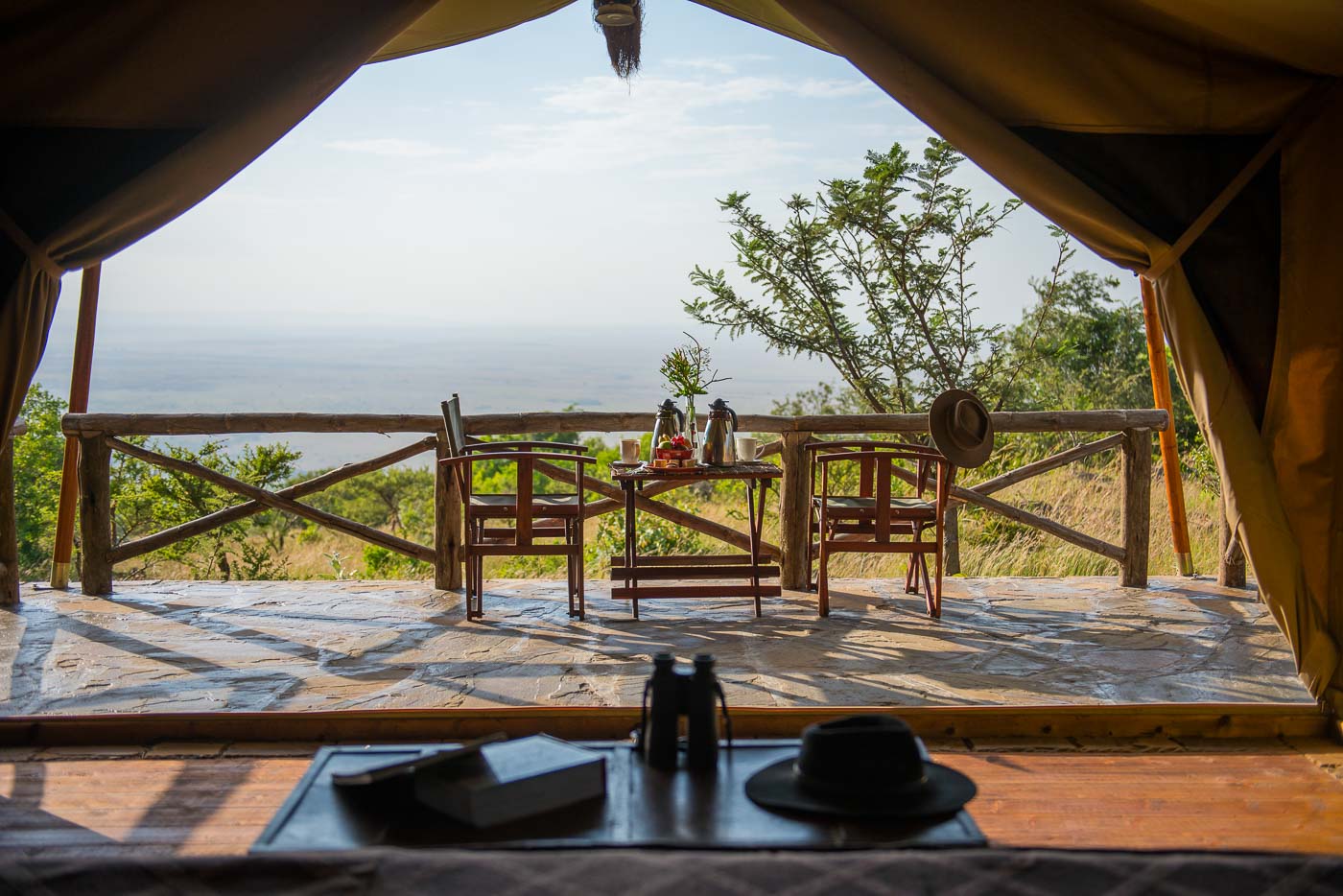The Australian Outback is not a place you can just wander into on your own (unless you’re Mick Dundee). To approach this 2.5 million square miles of rugged terrain and its countless deadly creatures, a fearless guide is essential. With local recommendations and a ton of research, all signs pointed to Adventure Tours’ Kakadu National Park and Katherine Gorge Safari. We joined their small-group trip (as in one other guest and our fantastic guide, Luke) and fell in love with this vibrant corner of the Northern Territory and UNESCO World Heritage Site.

Leaving the city of Darwin, our first stop was Mary River National Park… a lush place covered with lotus flowers, surrounded by waddle trees and exotic birds. The Mary River is renowned for its bird watching and abundance of water pythons (like 800 found in 1sq kilometer. Swimming is not recommended). Being so close to the equator and coast, this section of the Outback was surprisingly pretty tropical.

We stopped for lunch and took a riverboat up the Crocodile River, the border of Arnhem Land. This area of the Northern Territory is all aboriginal land and virtually closed to independent travelers. We cruised up the river escorted by our Wulna guide, learning about the local traditions, including how to throw a spear wicked far.

Adventure Tours has their own fixed camps around the country and ours had a lovely screened-in cabins and a dining tent with full kitchen facilities where Luke cooked us delicious meals.

The next morning we set out for Kakadu National Park, stopping for water monitors, wallaroos, and any other critters Eagle Eye Luke could spot. A favorite detour was this 50-year old and 15-foot tall Cathedral Termite Mound. The construction of these natural skyscrapers with their walls of mud, plants, saliva, and feces is mind-boggling.

Kakadu and its surrounds have stunning landscapes but when you get to Ubirr, with its rock shelters and ancient cave art, dating back 40,000 BC (yes, THAT old), you can see why UNESCO groupies swoon here. The aboriginal people of Kakadu are the oldest living culture on earth and, while these paintings date back an unfathomably long time, they are actually regularly being added to and updated by the local people who preserve them as archives. The aboriginal languages were never written, so their sacred texts of creation, law, and values were drawn out. We marveled at the rock art then climbed the sandstone cliff shelters for sunset views of the Nardab floodplain.

We delved deeper into Kakadu National Park and arrived to one of the most scenic Crocodile Dundee location, Gunlom Falls. Hiking alongside the 200-foot cascade, we reached the infinity pools on top, basked in the baths as Mick did, and enjoyed the stunning views across this diverse Outback landscape (six different environments to be exact: monsoonal vine forest, open woodland, flood plains and rivers, mangroves and mudflats, southern lowlands and ridgeline).

Katherine Gorge in Nitmiluk National Park was our most southerly and possibly most spectacular point in our Northern Territory tour. Formed by the Katherine River flowing from Arnhem Land to the Timor Sea, this 23 million-year-old natural marvel is made of towering red rock walls, with just enough room for a couple of boats to pass through. We sailed in between the 230-foot high pass taking in a bit of history and plenty of scenery.

With over 100,000 crocodiles, 140 species of marsupials, 300+ types of birds, it’s not surprising we had animal sightings up until our return to Darwin. We only captured a fraction of the animals on film but have a gander at this water monitor, frill neck lizard, rock wallaby, wallaroos and the most famous Outback mammal of them all, Charlie the Water Buffalo, spotted at the Adelaide River Inn Pub.

We not only survived the Outback, we were enriched by it. Adventure Tours’ thoughtful itineraries and incredible guides made Kakadu and its surrounds come alive—from animal sightings to aboriginal culture. Don’t let the “deadly” reviews of the Outback deter you, it’s a to-die-for place.
Mike and Anne Howard left on their honeymoon in 2012 and have been traveling the world ever since. HoneyTrek.com chronicles their adventures across 7 continents, 44 countries, and counting! Their writing, photography, and the story of the “World’s Longest Honeymoon” can also be found on Condé Nast Traveler, BBC Travel, The Knot, Los Angeles Times, CBS, and dozens of other international publications. Connect with @HoneyTrek on Facebook, Instagram, and Twitter.




















